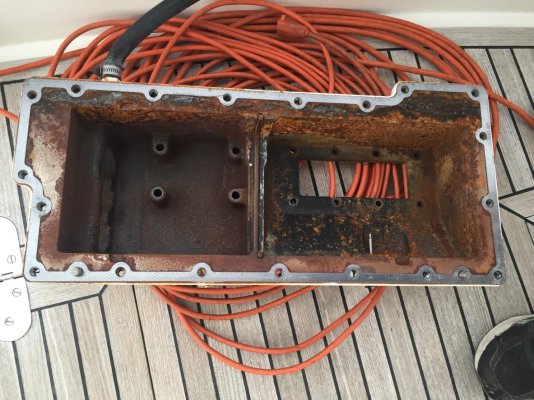Pat,
Often new aftercoolers are assembled at the factory with little to no grease. It is the grease that provides protection against corrosion. If it were my boat, with twins, I would not "put off" too long a complete service of the aftercoolers. Not only are you relying on the seals to keep water (often seawater) out of your engine, but depending on your engine (blow by, etc.) and your CCV system, an oily "gunk" can clog up the air side of the aftercooler and limit the air supply (maybe resulting in overloading). Corrosion (which is accelerated if there was no grease used when assembling) is often a big problem resulting in ultimately engine failure (you know about this one), or the need to replace the expensive aftercooler because you cannot get them apart or when you do, they are so badly corroded that they are not serviceable.
As has been stated by others, freshwater flushing including operating in freshwater, can slow down the build up of (calcium) deposits and the corrosion. Check out Tony Athens' site sbmar.com and you will find lots of info on this. He advises servicing aftercoolers every 2-3 years (saltwater use no flushing) and every 3-5 years if regularly freshwater flushed. Being prudent, especially until you learn how your exact situation affects your aftercoolers, is never a bad idea (especially in this case because you don't know for sure if the coolers were disassembled and properly greased before being installed on your engines).
I haven't had CATS, but did own Cummins and the same principles apply. If you need to hire out the work the first time, insist on "learning" how to do it yourself for the future.
That is my 2 cents worth, good luck.

